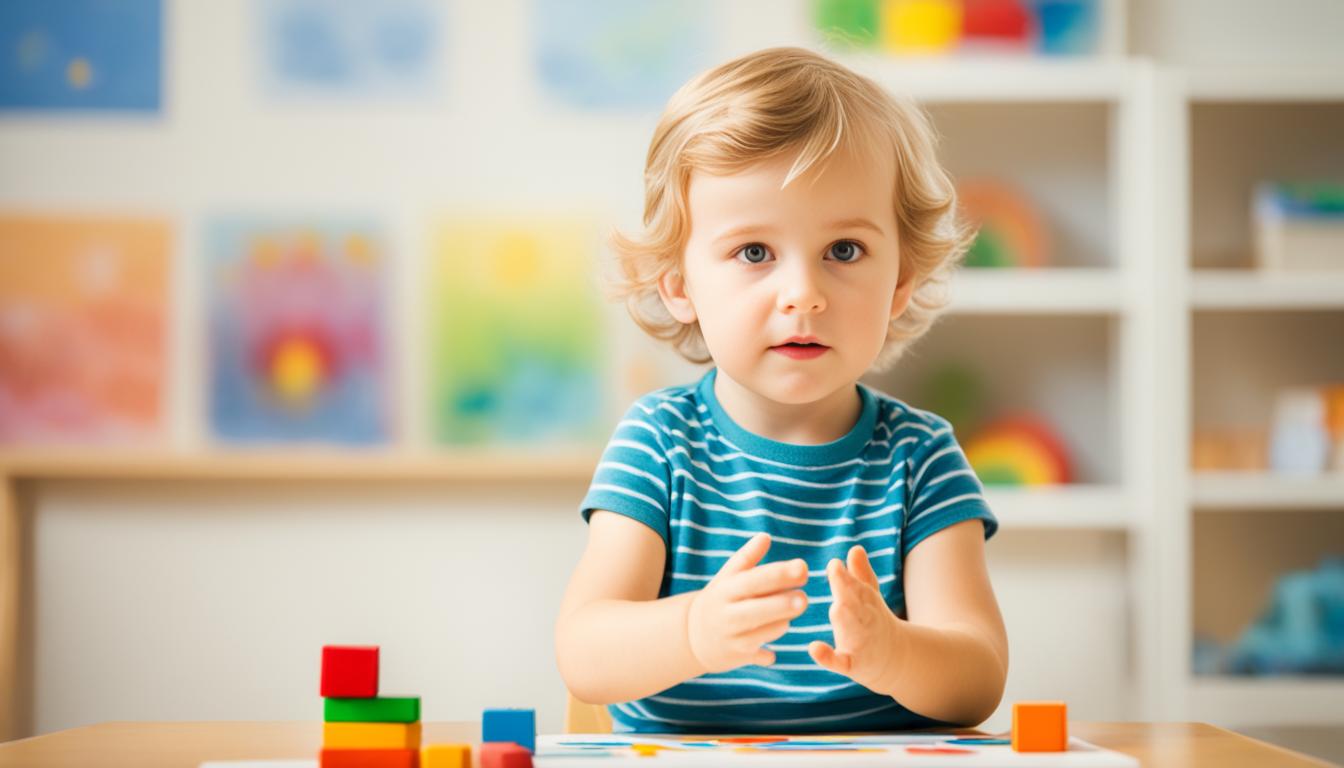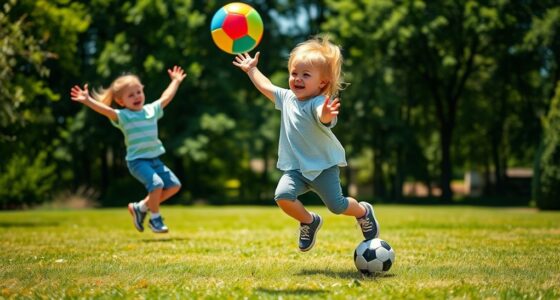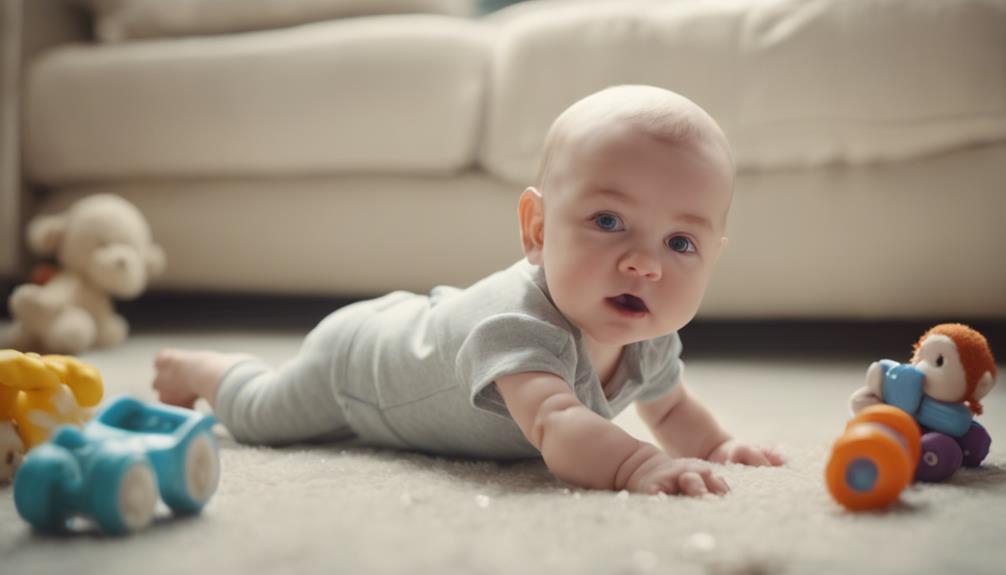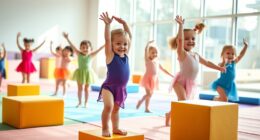Picture a typical morning in the household of a young child named Emma. When the first rays of sunlight peek into her room, Emma’s eyes spring open, filled with excitement for the day ahead. Brimming with energy, she bounces out of bed and makes her way to the kitchen, eager to kick off her morning with a bowl of colorful cereal. As Emma happily enjoys her breakfast, her mother observes that she is so absorbed in her own little world that she is oblivious to her surroundings. Emma is not intentionally ignoring or rebelling, but simply still learning the important skill of self-regulation.
Self-regulation, defined as the ability to manage thoughts, feelings, and behaviors to enable goal-directed actions, is a fundamental skill that children need to learn in their early years1. It involves important clusters of skills such as executive function, emotional regulation, and behavioral regulation1. Children who have strong self-regulation skills are more likely to succeed academically, achieve their long-term goals, and navigate their relationships and behavior effectively later in life1. However, self-regulation doesn’t develop overnight; it is a gradual process that begins in infancy and continues throughout early childhood12.
As infants like Emma transition into toddlers, they start to demonstrate the foundation of self-regulation. Toddlers aged 2-3.5 can focus their attention for about 30 seconds to 1 minute at a time, and they may begin to comfort themselves when upset, such as playing with a new toy2. At this stage, they are also developing the ability to recognize different emotions in themselves and others2. It’s fascinating to witness these little moments of growth, as their self-regulation skills gradually unfold.
As preschoolers, children like Emma rapidly expand their self-regulation capacity, recognizing and naming their feelings, empathizing with others, and practicing intentional emotional regulation strategies1. It’s during this time that they begin to understand the importance of controlling their emotions and impulses to achieve their goals1. Preschoolers often need guidance from caring adults to navigate the complexity of their emotions as they learn to self-regulate. Building positive relationships with children is key to their self-regulation development, providing them with the support and encouragement they need to succeed13.
So, how can caregivers foster self-regulation in their children? Creating a well-structured environment that supports the acquisition of self-regulation skills is essential. This involves establishing consistent rules and consequences, which help children understand the boundaries and expectations1. Additionally, teaching self-regulation skills through modeling and instruction can be invaluable3. Caregivers can also provide warm, responsive relationships that ensure children feel safe, loved, and supported3. By helping children understand the importance of goal attainment and how controlling their emotions and impulses aids in achieving those goals, caregivers play a pivotal role in nurturing self-regulation1.
As Emma happily finishes her cereal, her mom takes a moment to reflect on the journey of self-regulation that lies ahead for her daughter. With the right guidance, Emma will develop the skills she needs to manage her thoughts, emotions, and behaviors effectively. The tips and tricks in this article will empower caregivers like Emma’s mom to support their children’s self-regulation development, laying a strong foundation for their future success.
Key Takeaways:
- Self-regulation is a critical skill for children in the first five years of life, involving the management of thoughts, feelings, and behaviors to enable goal-directed actions1.
- Children who learn to self-regulate are more likely to succeed academically, achieve long-term goals, and navigate relationships and behavior effectively later in life1.
- Self-regulation develops gradually from infancy to early childhood, with infants demonstrating self-soothing behaviors, toddlers starting to focus their attention, and preschoolers rapidly developing their capacity for self-regulation12.
- Building positive relationships with children and creating a well-structured environment are vital for fostering self-regulation skills13.
- Teaching self-regulation skills through modeling, instruction, and helping children understand goal attainment is key1.
What is Self-Regulation in Child Development?
Self-regulation in child development refers to the ability to manage thoughts, feelings, and behaviors in a way that enables goal-directed actions. It encompasses various aspects, including executive function, emotional regulation, and behavioral regulation. Self-regulation skills enable children to succeed academically, cope with anxiety and frustration, and work effectively in teams.
Children typically start developing self-regulation skills when they are babies4. However, self-regulation development is most prominent during the toddler and preschool years, continuing into adulthood4. During these early years, toddlers can wait for short times for food and toys, but may still struggle with impulse control4. As they progress into the preschool stage, children start comprehending social expectations and interacting better with peers4. School-age children become capable of managing their wants and needs and considering others’ perspectives4. Pre-teens and teenagers further enhance their planning abilities, task perseverance, and social behavior considerations4.
It is important to note that children who strongly feel emotions may find it harder to self-regulate4. Additionally, various factors can affect a child’s self-regulation, such as tiredness, illness, changes in routine, and traumatic events4. If children exhibit challenging behavior more frequently, engage in dangerous actions, or display withdrawal symptoms, it is recommended to seek professional help4.
How Does Self-Regulation Develop?
Self-regulation development varies among children due to biological and genetic factors. However, it can be taught through direct instruction and intentional practice. Both nature and nurture play a role in self-regulation development, with some children starting off further ahead but all children capable of reaching the finish line with effective teaching and support. Individual attention may be required for some children to develop self-regulation skills.
Self-regulation starts developing in babies and progresses through toddler and preschool years, continuing into adulthood4. It is a complex skill that enables individuals to manage their thoughts, emotions, and behaviors to achieve their goals. Children who feel emotions intensely may find it harder to self-regulate4. Factors such as tiredness, illness, changes in routines, trauma, or significant events can also affect a child’s ability to regulate their behavior4. It is important to seek professional help if a child shows behaviors such as excessive tantrums, danger to self or others, or struggles with social interaction4. Some children may exhibit challenging behaviors more frequently as they grow older4.
Different environments, like home versus school, can impact a child’s self-regulation abilities4. It is crucial for professionals like GPs, child and family health nurses, and educators to provide guidance on encouraging positive behavior and self-regulation skills4. Tailoring expectations of behavior to the child’s age and development stage can also help prevent frustration due to mismatched skill levels4.
Factors Affecting Self-Regulation Development
| Factors | Impact on Self-Regulation Development |
|---|---|
| Biological and genetic factors | Determine the starting point of self-regulation development |
| Nature | Individual characteristics and temperament |
| Nurture | Effective teaching and support from caregivers and professionals |
| Individual attention | Some children require tailored support to develop self-regulation skills |
Supporting self-regulation development in early childhood is crucial as it predicts better performance in school, better relationships with others, and fewer behavioral difficulties3. Early childhood is a period of rapid brain development, particularly in the first five years of life, which lays the foundation for the growth of self-regulation skills3. It is recognized as one of the key areas of early child development in the Head Start Early Learning Outcomes Framework3.
Multiple studies have shown that parental warmth, responsiveness, and sensitivity support self-regulation development in children3. Caregivers have a central role in supporting the development of self-regulation in young children through co-regulation3. By providing warm and responsive relationships, structuring the environment, and teaching and coaching self-regulation skills, caregivers can contribute significantly to the self-regulation development of young children3. The capacity of caregivers for co-regulation depends on their own self-regulation skills3. Therefore, caregivers who improve their own coping and calm-down skills can better support children’s self-regulation development3.
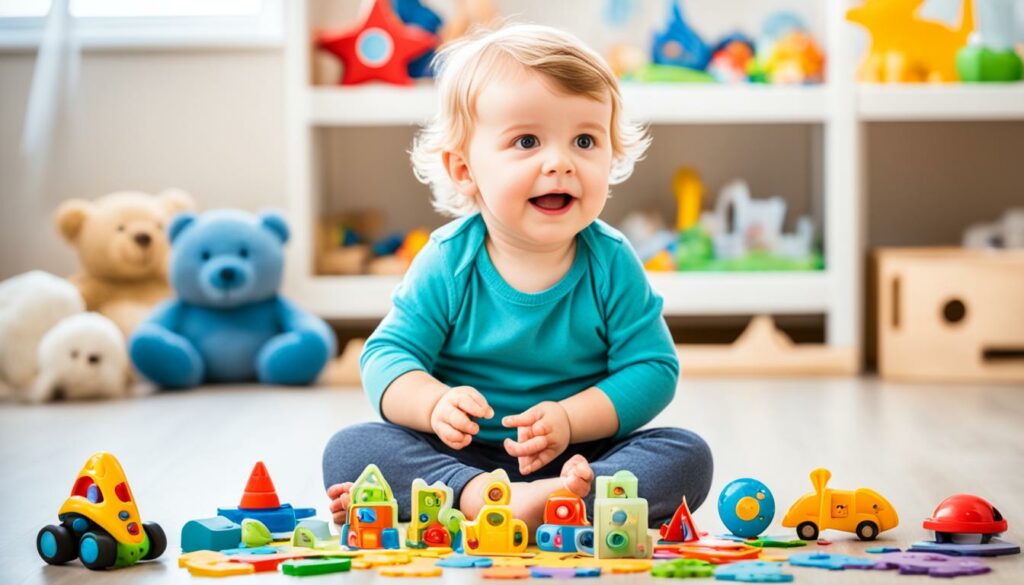
Understanding the dynamics of self-regulation development and providing effective teaching and support, along with individual attention, can help children develop this important skill. By nurturing self-regulation, caregivers and professionals contribute to the overall well-being and success of young children.
Observing Self-Regulation in Child Care Age Groups
As children grow older, the development of self-regulation skills becomes increasingly important. It is fascinating to observe how infants, toddlers, and preschool-aged children demonstrate their growing ability to manage their thoughts, emotions, and behaviors.
Infants display early signs of self-regulation through various self-soothing behaviors, such as sucking their fingers or shifting their gaze4. These actions allow them to comfort themselves and regulate their emotions in simple ways. It’s incredible to witness how even at such a young age, infants possess an innate ability to calm themselves by engaging in these self-regulatory behaviors.
As toddlers continue to grow and develop, they begin to show more advanced self-regulation skills. They start to focus their attention on specific activities, learning to block out distractions and concentrate on the task at hand. They also begin to label their feelings, which helps them better understand and regulate their emotions4. Additionally, toddlers may start to demonstrate the ability to delay gratification, showing a growing capacity for self-control.
Preschool-aged children, on the other hand, rapidly develop their self-regulation abilities. They begin to recognize and identify emotions in themselves and others, leading to a greater sense of empathy. Preschoolers also learn how to follow social expectations and engage in cooperative play with their peers, which requires them to regulate their own behavior4. Furthermore, they start using intentional emotional regulation strategies, such as deep breathing or seeking comfort from a caregiver, to manage their emotions effectively.
| Child Age Group | Self-Regulation Milestones |
|---|---|
| Infants | Display self-soothing behaviors like sucking fingers or shifting their gaze |
| Toddlers | Focus attention, label feelings, demonstrate the ability to delay gratification |
| Preschool-aged children | Recognize feelings, empathize, use intentional emotional regulation strategies |
It is awe-inspiring to witness the growth and development of self-regulation skills in children of different age groups. From the earliest stages of infancy to the preschool years, children continuously build upon their ability to manage their thoughts, emotions, and behavior. By supporting and nurturing these skills, caregivers can lay the foundation for healthy self-regulation as children progress through their development.
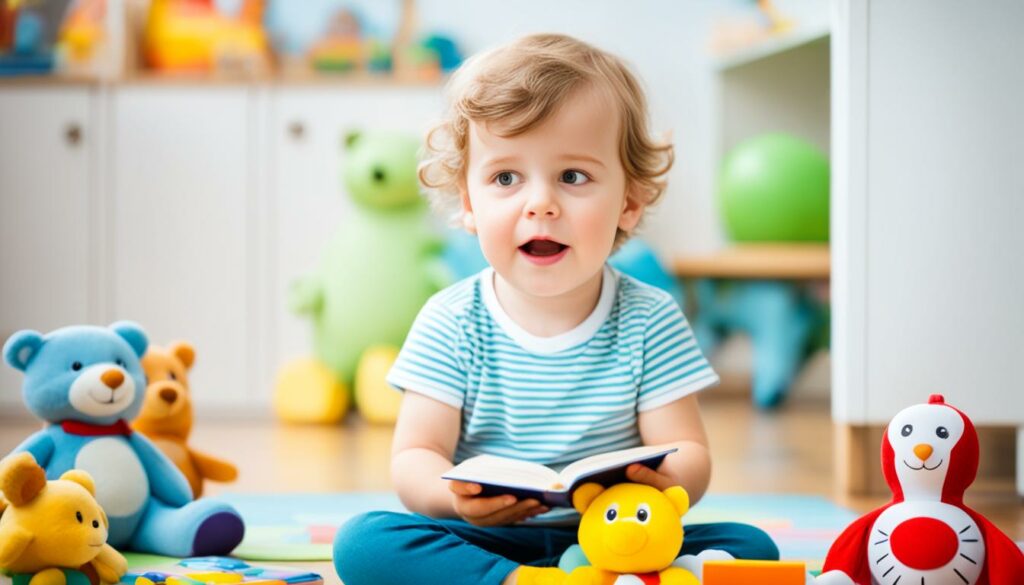
Understanding how self-regulation manifests in infants, toddlers, and preschool-aged children allows parents, caregivers, and educators to provide appropriate guidance and support. By tailoring strategies and interventions based on a child’s specific age and developmental stage, adults can foster the growth of self-regulation skills and empower children to navigate their emotions and behaviors successfully.
How to Promote Self-Regulation in Child Development
Promoting self-regulation in child development is essential for fostering healthy emotional and behavioral development. By building positive relationships, creating a structured environment, and practicing positive discipline, caregivers can help children develop crucial self-regulation skills.
Building Positive Relationships
One of the key factors in promoting self-regulation is building positive relationships with children. By establishing a warm and supportive connection, caregivers create a safe and nurturing environment that encourages children to express their thoughts and emotions openly. This promotes self-awareness and helps children develop the skills to manage their emotions effectively. Additionally, positive relationships provide a foundation for trust and strengthen the caregiver-child bond, which is essential for effective guidance and teaching.
Creating a Structured Environment
A structured environment plays a vital role in promoting self-regulation. Consistent routines and clear expectations help children develop a sense of predictability and understand what is expected of them. This structure allows children to internalize the rules and boundaries, enabling them to regulate their behaviors accordingly. Providing visual schedules, using timers, and offering gentle reminders help children anticipate transitions and manage their time effectively, contributing to improved self-regulation.
Helping Children Understand the Big Picture of Goal Achievement
Helping children understand the importance of self-regulation in achieving their goals is crucial. Caregivers can engage children in age-appropriate discussions about setting goals and breaking them down into manageable steps. By linking self-regulation to the achievement of desired outcomes, children develop a deeper understanding of how their actions and behaviors impact their ability to accomplish their goals. This perspective empowers them to make conscious choices, practice delayed gratification, and exert self-control to align their behaviors with their desired outcomes.
Practicing Positive Discipline
Positive discipline is an effective approach to teach children about the consequences of their behavior and foster self-regulation. By providing consistent and fair consequences for actions, children learn to connect their behaviors with outcomes, guiding them toward desirable choices. Positive discipline focuses on cooperation, problem-solving, and teaching rather than punishment. Implementing strategies such as time-ins, redirection, natural consequences, and logical consequences helps children develop a deeper understanding of cause and effect, enhancing their self-regulation skills.
By promoting self-regulation through building positive relationships, creating a structured environment, helping children understand the big picture of goal achievement, and practicing positive discipline, caregivers play a vital role in supporting children’s self-regulation development.
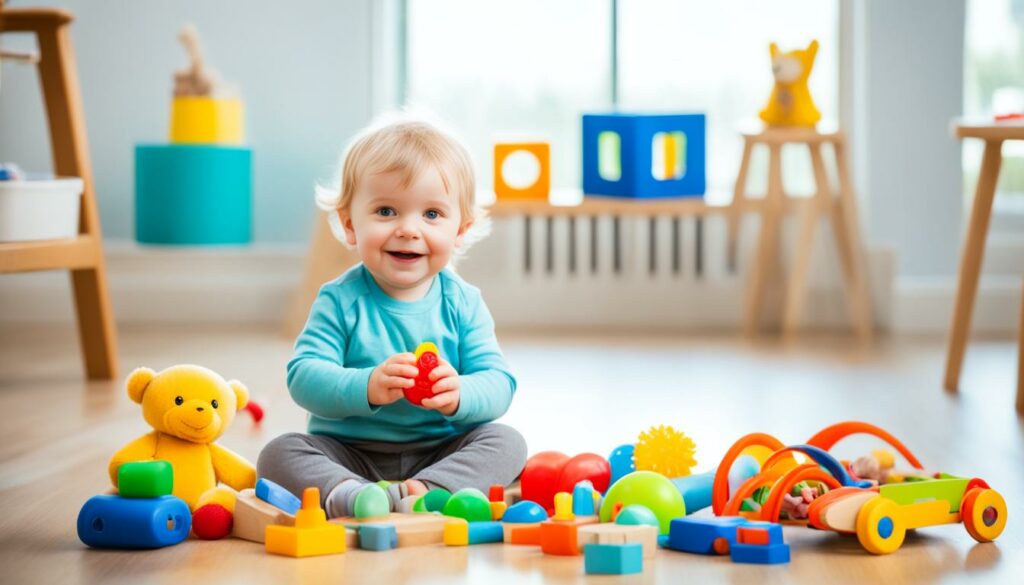
| Statistical Data | Reference |
|---|---|
| Self-regulation includes clusters of skills like executive function, emotional regulation, and behavioral regulation. | 1 |
| Kids who learn to self-regulate are more likely to succeed academically and achieve their long-term goals. | 1 |
| Stronger self-regulation skills developed in early life predict better performance in school and interpersonal relationships. | 1 |
| Every child is different in terms of early self-regulation skills due to biological and genetic reasons. | 1 |
| Infants may show self-soothing behaviors like sucking fingers or shifting their gaze when overwhelmed. | 1 |
| Toddlers may focus on tasks for short periods and start labeling their feelings. | 1 |
| Preschoolers rapidly develop their self-regulation capacity, including recognizing feelings in themselves and others. | 1 |
| Caregivers play a crucial role in promoting self-regulation in child development settings through positive relationships and a structured environment. | 1 |
Helping Children with Self-Regulation: A 3-Step Recipe
As adults, we play a crucial role in helping children develop self-regulation skills. By using a simple 3-step recipe based on Dr. Daniel Siegel’s “Name it to tame it” process, we can support children in managing their feelings and promoting self-regulation.
- Step 1: Notice the Feeling
- Step 2: Name the Feeling
- Step 3: Respond to the Feeling
Encourage children to pay attention to their inner experiences and recognize their emotions. This step involves helping them become aware of how their bodies and minds feel in different situations. For example, you can say, “Notice how your heart beats faster when you’re excited.” By cultivating this awareness, children can start to understand their emotions on a deeper level and recognize the triggers that lead to different feelings. By doing so, they become more empowered to manage their emotions effectively.5
Provide children with a vocabulary of emotions, enabling them to label and express their feelings accurately. By teaching them words like happy, sad, angry, or frustrated, we help them develop emotional intelligence and improve their self-regulation abilities. When children can identify and articulate their emotions, it becomes easier for them to communicate their needs. For example, when a child says, “I feel anxious,” they are better equipped to seek appropriate support and engage in coping strategies.5
Guide children in responding to their feelings in a healthy and constructive way. Offer various activities that foster self-regulation, such as taking a time-in together, where the child spends a few minutes in a calm and quiet space with an adult. This helps them refocus their attention and regulate their emotions. Mindfulness exercises, engaging in physical movements, or sensory experiences are also effective strategies to respond to feelings and promote self-regulation. Encourage children to choose activities that resonate with them and make them feel more balanced and in control.5
Remember, each child is unique, and self-regulation development takes time and practice. Stay patient and supportive as you guide them through this process. By helping children notice their feelings, name their feelings, and respond to their feelings through activities that promote self-regulation, we empower them to navigate their emotions and thrive in various situations.5
Expert Insight
“When children can recognize, label, and appropriately express their emotions, it sets the stage for self-regulation and positive overall development.” – Dr. Daniel Siegel, renowned psychiatrist and author
By following this 3-step recipe, we lay a strong foundation for children to develop essential self-regulation skills that will benefit them throughout their lives. Let’s empower and support our children in becoming emotionally resilient individuals who can manage their feelings and navigate the world with confidence.
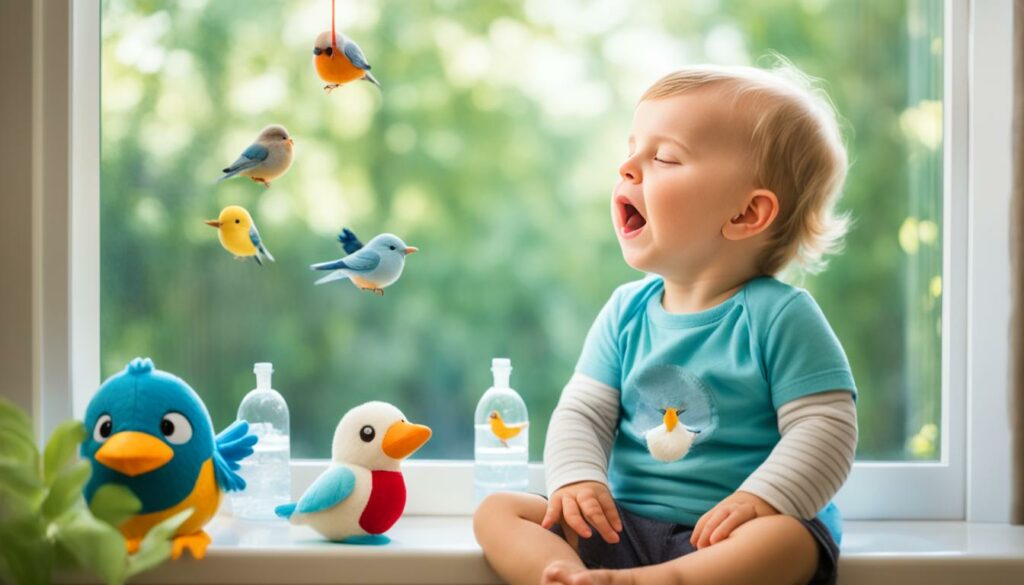
Milestones in Self-Regulation Development
Self-regulation development occurs in different stages and is closely intertwined with the development of attention spotlight. As children progress through their early years, they reach specific milestones that reflect their growing ability to manage their thoughts, feelings, and behaviors. Let’s explore some of these milestones in different age groups:
Infancy
In the first few months of life, infants begin to display early signs of self-regulation. They show increased alertness and develop sleep-wake patterns. During this stage, their attention span is relatively short, focusing for about 2-4 seconds at a time.2
Toddlerhood
As toddlers grow and explore the world around them, their attention span expands. They can now focus their attention on multiple things for about 10-15 seconds at a time. They start to engage in activities that require sustained attention and show the ability to shift their attention from one object or task to another.2
Preschool Age
Preschool-aged children make significant strides in self-regulation. They develop the ability to stop themselves from doing inappropriate things and demonstrate increased self-control. Their attention span increases to about 2 minutes at a time, allowing them to engage in structured activities for longer periods.2
Additionally, preschoolers start to develop other important self-regulation skills, such as recognizing and labeling their own and others’ emotions. They begin to understand more complex emotions and can identify multiple feelings in themselves and others. This growing emotional awareness contributes to their overall self-regulation development.
Cooperation and Rule-Following
As children reach the age of 5-7 years, they continue to refine their self-regulation skills. They become more cooperative, working with others to decide on rules and following simple rules in games and activities. Cooperation and rule-following require the ability to manage impulses, control behavior, and work towards common goals, all of which are essential aspects of self-regulation.
The milestones in self-regulation development highlight how children’s attention and self-regulation abilities progressively improve as they grow. These milestones serve as indicators for parents and educators, guiding them in supporting children’s self-regulation development.

Understanding the Role of Attention in Self-Regulation
Attention plays a crucial role in self-regulation as it helps control emotions and behaviors. By directing our attention to things that support our goals and filtering out distractions, we can manage our emotions and behavior more effectively. Attention is closely tied to other mental functions like memory, allowing us to plan our behaviors and hold future goals in our spotlight. However, attention and self-regulation take time to develop and require support from caregivers.
Research has shown that attention plays a significant role in self-regulation. For example, a study by Beauregard, Levesque, and Bourgouin (2001) explored the neural correlates of conscious self-regulation of emotion. The findings revealed that attentional control is crucial for regulating emotional responses.6
Controlling attention is a key aspect of self-regulation. When we dial up our attention to focus on a specific task, we can better regulate our emotions and behaviors. On the other hand, dialing down our attention can help reduce arousal and calm ourselves in stressful situations. This ability to regulate our attention contributes to our overall self-regulation skills.7
Children’s attentional skills are particularly important in the development of self-regulation. As children grow and mature, they learn to control their attention and direct it towards relevant information. This cognitive ability allows them to regulate their emotions and behaviors more effectively. Furthermore, research by Carlson and Moses (2001) has shown that individual differences in inhibitory control, a component of attention, are associated with children’s theory of mind.6
“Attention is the gateway to self-regulation. By guiding our attention, we can modulate our emotions and control our actions, which are essential skills for self-regulation.”
According to studies by Blair et al. (1999) on dissociable neural responses to facial expressions, different emotions require different attentional mechanisms for regulation. This suggests that attentional processes play a crucial role in modulating emotional responses and regulating behavior.6
Moreover, attention allows individuals to monitor and regulate conflict situations effectively. Botvinick’s analysis in 2007 on conflict monitoring and decision-making demonstrated the involvement of the anterior cingulate cortex, a key brain region responsible for attentional control, in self-regulation processes.6
| Statistical Data | Reference |
|---|---|
| Total of 1,386 children were assessed on behavioral self-regulation from preschool through first grade. | 7 |
| Majority of children were observed to develop self-regulation rapidly during early childhood. | 7 |
| Three distinct developmental patterns of growth were identified in children. | 7 |
| Identified trajectories were based on the timing of rapid gains, child gender, early language skills, and maternal education levels. | 7 |
| Development of self-regulation typically occurs between ages three and seven. | 7 |
| Children progress from reactive or co-regulated behavior to more advanced cognitive behavioral forms of self-regulation during this period. | 7 |
| Research highlights wide variation in self-regulation skills among children during early childhood. | 7 |
| Children’s ability to integrate multiple executive function skills increases across developmental time. | 7 |
| The Head-Toes-Knees-Shoulders task was utilized to assess behavioral self-regulation across children aged three to seven. | 7 |
| The HTKS task requires children to exhibit attention, working memory, and inhibition skills. | 7 |
| Distinction has been made between ‘cool’ executive functions and ‘hot’ executive functions, both crucial for development but associated with different outcomes. | 7 |
| Development of self-regulation starts in infancy with separate domains of skills integrating over time. | 7 |
| Different facets of self-regulation and associated skills may develop at varying times and rates. | 7 |
By understanding the role of attention in self-regulation, parents, educators, and caregivers can provide the necessary support and guidance to help children develop their attentional skills. This, in turn, contributes to their overall self-regulation abilities, helping them navigate emotions and behaviors more effectively.
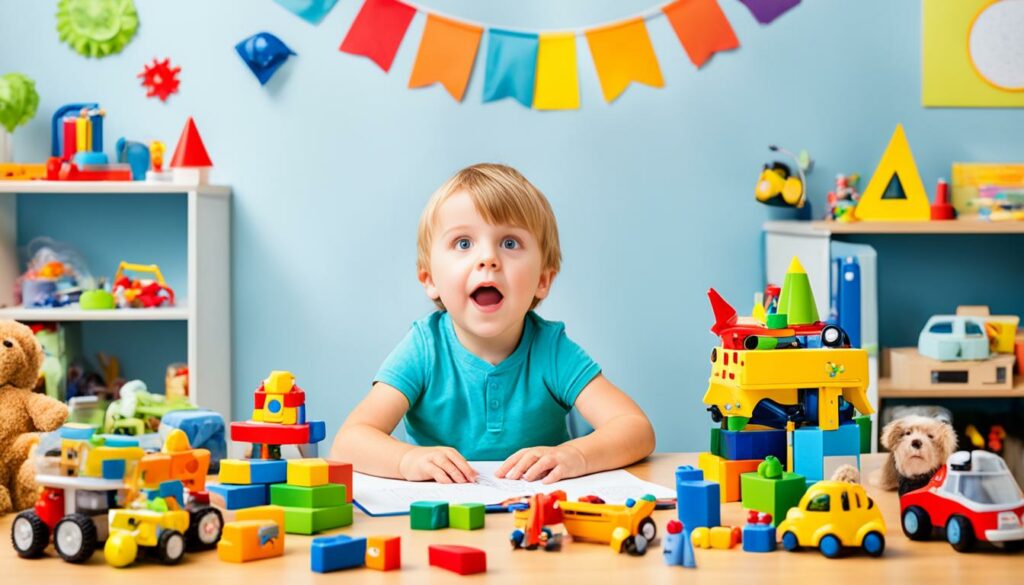
Overall, attention is a key component of self-regulation, enabling individuals to control their emotions and behaviors. Through understanding and supporting the development of attentional skills, caregivers can help children cultivate effective self-regulation techniques and promote their overall well-being.
Conclusion
Self-regulation is a critical skill for children in early childhood. It predicts better performance in school, improved relationships with others, and fewer behavioral difficulties.3 Parental warmth, responsiveness, and sensitivity significantly support self-regulation development in children, emphasizing the vital role caregivers play in fostering these skills.3 By investing in self-regulation training for children from diverse backgrounds, caregivers can ensure their readiness for kindergarten.3 The foundation for self-regulation is laid early in life and continues to develop through young adulthood, offering lifelong benefits.3 Co-regulation between adults and children is key for self-regulation across development stages.3 Caregivers’ own self-regulation skills significantly impact their ability to effectively support children’s self-regulation development.3 Structured environments and consistent routines promote children’s sense of security and contribute to their self-regulation skills.3
Self-regulation in early childhood includes the ability to control thoughts, behaviors, and feelings to achieve goal-directed behaviors. It incorporates neurological processes, executive function, behavioral self-regulation, and emotion regulation.8 Studies show that self-regulation in early childhood predicts various outcomes, including achievement, mental health, and interpersonal behaviors in later school years and adulthood.8 Pre-academic skills like literacy and numeracy, as well as social-emotional outcomes such as social competence and internalizing/externalizing behaviors, are also associated with self-regulation.8 Children with stronger executive function tend to have higher academic achievement, especially in mathematics, and behavioral self-regulation skills predict growth in various subjects during kindergarten.8 Higher levels of emotion regulation are correlated with increased pre-academic skills and achievement in early childhood.8 Self-regulation is essential for children’s concurrent and subsequent school performance, helping them control thoughts, feelings, and behaviors in complex learning environments, while supporting positive social interactions and friendships among peers.8
Research involving 1,386 children revealed that the majority of children rapidly develop self-regulation during early childhood, with three distinct developmental patterns of growth identified. These trajectories are influenced by factors such as the timing of rapid gains, child gender, early language skills, and maternal education levels.7
By understanding the importance of self-regulation, caregivers can actively promote its development in children’s early years, setting them up for success in various aspects of their lives. Building positive relationships, creating structured environments, and practicing positive discipline are effective strategies for fostering self-regulation skills. Investing in self-regulation training and providing consistent support will enable children to navigate challenges, regulate their emotions, and achieve their goals.
FAQ
What is self-regulation in child development?
How does self-regulation develop?
How can caregivers promote self-regulation in child development?
How can adults help children with self-regulation?
What are the milestones in self-regulation development?
What is the role of attention in self-regulation?
How important is self-regulation in early childhood?
Source Links
- https://www.procaresoftware.com/blog/how-to-promote-self-regulation-in-child-development/
- https://extensionpubs.unl.edu/publication/1980/html/view
- https://fpg.unc.edu/sites/fpg.unc.edu/files/resources/reports-and-policy-briefs/PromotingSelf-RegulationIntheFirstFiveYears.pdf
- https://raisingchildren.net.au/toddlers/behaviour/understanding-behaviour/self-regulation
- https://heartmindonline.org/resources/12-self-regulation-strategies-for-young-children
- https://www.ncbi.nlm.nih.gov/pmc/articles/PMC2748943/
- https://www.ncbi.nlm.nih.gov/pmc/articles/PMC5123795/
- https://www.frontiersin.org/journals/psychology/articles/10.3389/fpsyg.2021.717317/full

